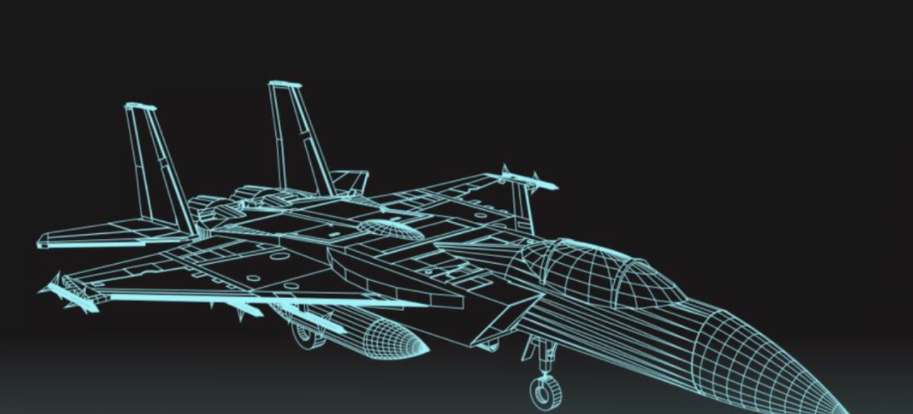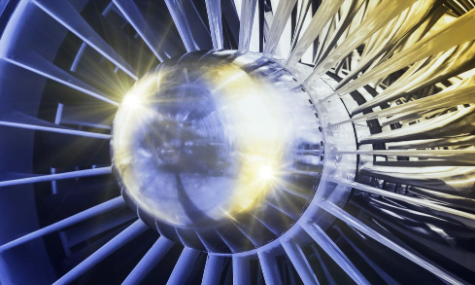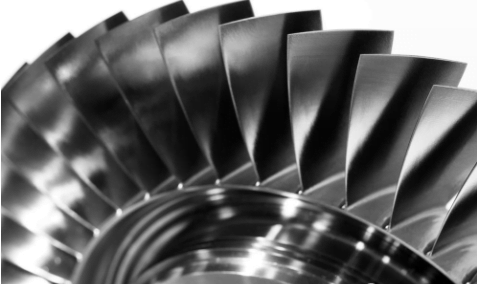Titanium alloy with its high strength, good mechanical properties and corrosion resistance characteristics in the aviation manufacturing industry is more and more widely used, with the proportion of titanium alloy in the aircraft is increasing, titanium alloy aerospace structural parts of the CNC machining efficiency of the aviation manufacturing enterprises also more and more influence. Titanium alloy is a difficult to machine material, its relative machinability is 0.15 ~ 0.25, machining efficiency is only 10% of the aluminum alloy, so the low machining efficiency of titanium alloy aerospace structural parts has seriously restricted the mass production of modern aircraft. To achieve efficient machining of titanium alloy aerospace structural parts has become a common concern for aviation manufacturing enterprises, CNC equipment manufacturers and tool manufacturers.

01、 Titanium alloy cutting properties
Titanium alloy has good mechanical properties, strong corrosion resistance and small specific gravity. However, in processing, the cutting performance of titanium alloy is very poor, mainly in the following aspects.
(1) large cutting force.
Titanium alloy material strength, cutting resistance in cutting, resulting in a large amount of cutting edge cutting heat;
(2) low thermal conductivity.
Titanium alloy heat diffusion rate is low, a large amount of cutting heat is concentrated in the cutting area;
(3) High tool tip stress.
The plasticity of titanium alloy is low, and the chips generated by processing are very easy to bend, resulting in a short contact length between the chips and the front cutting surface, so the cutting edge on the unit area of the force increases, resulting in stress concentration at the tip of the tool;
(4) Friction force.
The modulus of elasticity of titanium alloy is small, resulting in increased friction between the front and rear cutting surfaces;
(5) High chemical activity.
Titanium elements in the high cutting temperature, it is easy to chemical reaction with hydrogen, oxygen, nitrogen and other gases in the air, the formation of surface hard layer, accelerating tool wear.

02、 High-efficiency processing equipment for titanium alloys
In order to meet the efficient processing of titanium alloy structural parts, the new titanium alloy processing equipment shows the following trends.
(1) High torque.
Titanium alloy high strength, machining in the cutting force is very high, titanium alloy machining machine tool is a distinctive feature of the spindle torque and swing angle torque is large.
(2) The application of electric spindles.
High power, high torque electric spindles have been used in titanium alloy machining.
(3) Horizontal machining centres are used for titanium machining.
Horizontal machining centre chip removal is convenient, conducive to improving processing efficiency and processing quality, exchangeable table is easy to achieve multi-station processing and the formation of a flexible production line to improve equipment utilization.
(4) High pressure internal cooling.
In titanium alloy machining, the cutting heat is concentrated in the tool tip, which is easy to cause tool wear or damage, high pressure internal cooling can be accurately sprayed to the cutting area to take away the cutting heat.
03、 Titanium alloy efficient machining tools
Titanium alloy cutting machinability is poor, the traditional processing method cutting speed generally does not exceed 60m/min.
Rough machining of titanium alloys is mainly based on large depth of cut, low speed and low feed to obtain the maximum metal removal rate; finishing using PVD coated carbide tools for small width of cut, large depth of cut high speed milling to obtain high efficiency cutting.
Therefore, titanium machining tools are mainly focused on how to avoid chattering, reduce cutting forces and lower cutting temperatures during powerful cutting.

04、 Titanium alloy efficient machining tools
(1) Titanium alloy face milling processing.
Face milling of titanium alloy parts, the use of small depth of cut, large feed milling method to obtain efficient processing. The principle of large feed milling is to reduce the main deviation angle of the tool, so that the tool can still maintain a small chip thickness at a very high feed, in order to reduce the cutting force at high feed, to achieve a large amount of feed at low cutting speed, increasing the metal removal rate per unit depth of cut. At the same time the cutting force is partly vertical upwards, the tangential force is smaller and the power consumed is smaller, the machining method does not require high power and rigidity of the machine tool and is very widely used.
(2) Titanium alloy slot machining.
Slot cavity is a major feature of titanium alloy aerospace structural parts, high material removal rate, workload, so slot machining is the key to achieve efficient machining of titanium alloy parts (see Figure 1). Powerful cutting with large depth of cut, low speed and low feed to obtain maximum metal removal is an effective method for roughing titanium alloys. At present, the roughing of titanium alloy powerful milling tools to corn milling cutter efficiency is the highest and widely used.
(3) Rounding technology.
In order to reduce the weight of the aircraft, the rounded corners of the aircraft structural parts at the corners of the slot cavity are usually small, requiring a smaller diameter milling cutter for processing. Due to the sudden change in cutting volume at the rounded corners, the cutting forces are very variable. In the case of abrupt changes in cutting forces, the tool is prone to vibration and even chipping, resulting in severe tool wear and low machining efficiency. Insert milling is the best way to address the efficiency of corner machining. Insert milling is less vibratory than conventional milling and is more efficient in removing the corner allowance by walking the tool. By insert milling with different diameters of insert milling tools, the majority of the corner residue can be removed, and then the residue generated by insert milling can be removed with an end mill, which can significantly improve the machining efficiency.
(4) Precision side milling technology.
When finishing the side wall, the intermittent nature of milling is used to achieve high speed cutting to improve the surface quality of the part and machining efficiency. When finishing the side, due to the small cutting width, the cutting time for each turn of the cutter teeth is very short, i.e. the cooling time is very long.
With adequate cooling, the cutting temperature can be effectively controlled and therefore the cutting speed can be increased significantly to improve machining efficiency, as shown in Figures 2 and 3. High speed cutting and finishing of titanium alloys with PVD coated solid carbide milling cutters or super dense tooth carbide milling cutters can significantly improve machining efficiency and accuracy.
(5) Simulation and optimisation techniques.
Titanium alloy structure parts in rough machining cutting allowance will constantly change. Current CAM software prepared by the NC program can often only set a fixed cutting parameters, in order to avoid local programs due to excessive cutting volume caused by the impact on the tool, the machine tool, usually by reducing the overall cutting parameters to ensure tool life and part quality, thus machining efficiency is extremely low.
Vericut's simulation optimisation technology is a good solution to this problem. The Vericut software sets up a library of optimised cutting parameters and uses the software to carry out simulations, through which the actual machining allowances and cutting conditions are guessed and the cutting parameters in the program are optimised according to the machining allowances and cutting conditions. The tool life is extended, the quality of the part is guaranteed and the machining efficiency is improved.












